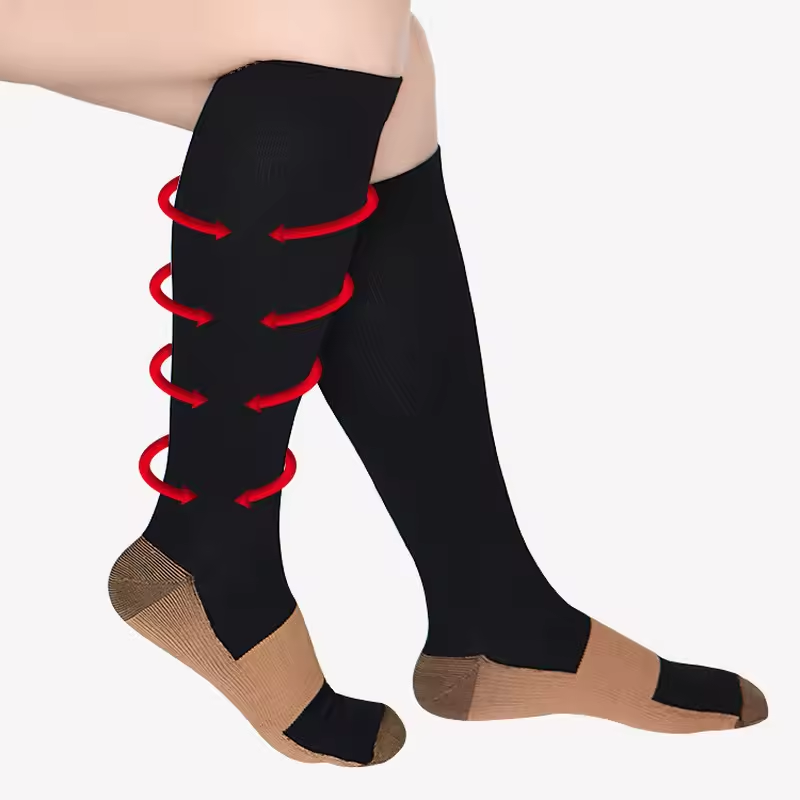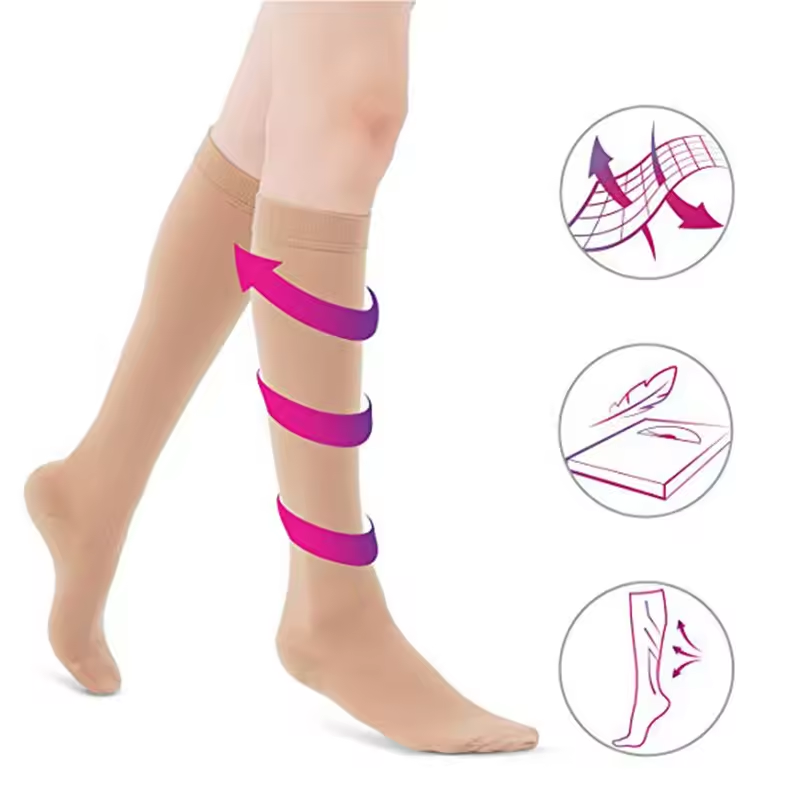What Are Compression Socks?
Compression socks are specialized hosiery designed to help with blood flow. They apply gentle pressure to your legs and ankles. This promotes blood movement up your legs and helps prevent swelling. These socks come in various sizes and strengths. Athletes, pregnant women, and people with certain medical conditions often use them.

Wearing compression socks can improve blood circulation. This is helpful during long periods of sitting or standing. They support veins and can reduce pain and swelling in the legs. People with varicose veins or those who just had surgery may benefit from them.
The key is to choose the right level of compression. It can range from mild to extra strong. You should always consult a professional before starting to wear them. A healthcare provider can suggest the best type and duration of use for your needs.
Benefits of Wearing Compression Socks
Compression socks bring many advantages to various users. When worn regularly, these benefits range from improved circulatory health to decreased discomfort. Here is a breakdown of the benefits you may experience with these specialized hosiery:
- Enhanced Circulation: They foster healthy blood flow, reducing the risk of clots.
- Swelling Reduction: The pressure applied helps minimize leg swelling, especially for those on their feet often.
- Varicose Vein Relief: Wearing these socks may help alleviate the discomfort associated with varicose veins.
- Support During Exercise: Athletes can experience less fatigue and better performance due to improved blood flow.
- Assistance Post-Surgery: After procedures that affect circulation, these socks aid in the recovery process.
It’s essential to wear compression socks as advised to reap these benefits without added risk. People from different walks of life find compression socks helpful. These include athletes, pregnant women, those with specific health conditions, and individuals with occupation-related risks for poor circulation. Pairing consistent use with correct sock types can lead to significant improvements in leg health and comfort.

How Long Can Compression Socks Be Worn?
Determining how long to wear compression socks involves several factors. These include the level of compression, your health condition, and activity level. Generally, it’s safe to wear compression socks all day during wakeful hours. You should put them on before getting out of bed in the morning and take them off before sleep. However, if you’re wearing them for a specific health issue, follow your healthcare provider’s instructions.
Individuals with circulatory problems may benefit from longer wear times. Yet, those using them for sports recovery might wear them only for a few hours. Pay attention to your body’s signals. If you experience discomfort or any negative symptoms, it’s wise to take a break. Some discomfort is typical when first starting to wear them, but persistent pain is not.
For post-surgery recovery, your doctor will advise on the duration of wear. It’s often longer than what is typical for everyday use. In fact, some people may need to wear them for several weeks continuously after surgery, only taking them off to bathe.
It’s essential to strike a balance. Correct use prevents potential issues from arising. Wearing compression socks for the suggested duration maximizes benefits while minimizing risks. Consistency is key, as intermittent wear may not provide the full circulatory support needed.
To sum up, how long you can wear compression socks depends on your situation. Most people can wear them safely throughout the day. Be sure to consult with a professional for personalized guidance. And remember, don’t wear compression socks at night unless told to do so by a doctor.
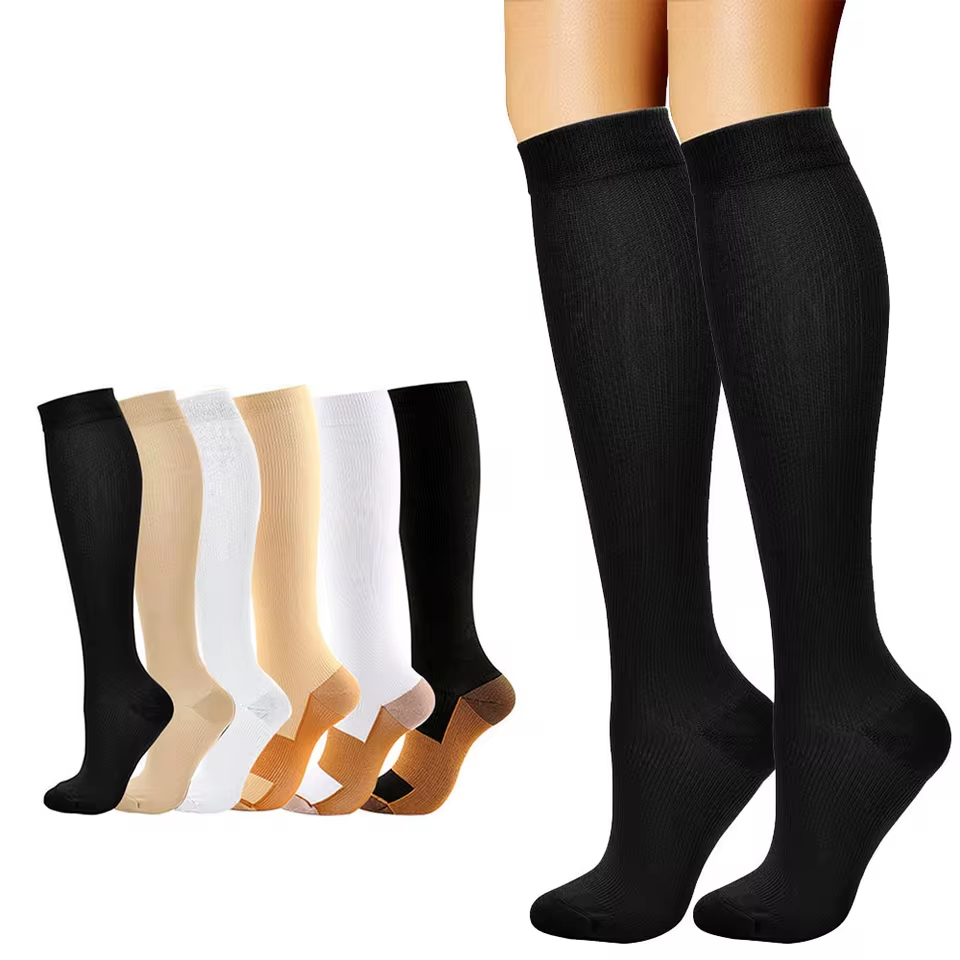
Potential Risks of Prolonged Use
While compression socks offer numerous benefits, wearing them for too long can pose risks. It’s essential to be aware of these potential issues to use compression socks safely. Noting these risks will guide you in managing the duration of wear to avoid adverse effects.
- Skin Irritation or Breakdown: Prolonged pressure can irritate skin, leading to redness or ulcers.
- Discomfort and Pain: Excessive wear may cause discomfort or amplify pain in the legs.
- Circulatory Problems: Overuse can lead to circulation issues instead of improving them.
- Heat and Sweat Accumulation: Long periods of use can trap heat and sweat, which may lead to infections.
Listening to your body is key in preventing these issues. If you notice itching, redness, or discomfort, consider reducing wear time. Varying the period you wear compression socks can also help mitigate risks. It’s crucial to follow the guidelines provided by healthcare professionals on ‘how long can I wear compression socks’ to ensure safe and effective use.
Guidelines for Wearing Compression Socks Safely
To use compression socks without risks, follow these safe practices:
- Get the Right Fit: Always ensure your socks fit well. Too tight may harm; too loose won’t help.
- Follow Medical Advice: Wear socks as your doctor suggests, especially for health conditions.
- Gradually Increase Duration: Start by wearing socks for a short period. Then extend wear time slowly.
- Monitor Your Skin: Look for signs of irritation or discomfort. If you see any, adjust your use.
- Stay Clean: Keep your feet and compression socks clean to avoid infections.
- Remove Them Nightly: Unless your doctor says otherwise, do not sleep in compression socks.
- Watch for Symptoms: If you feel pain, numbness, or tingling, take the socks off.
These guidelines help you enjoy the benefits of compression socks and avoid potential risks. Remember ‘how long can I wear compression socks’ depends on your individual needs and health advice.
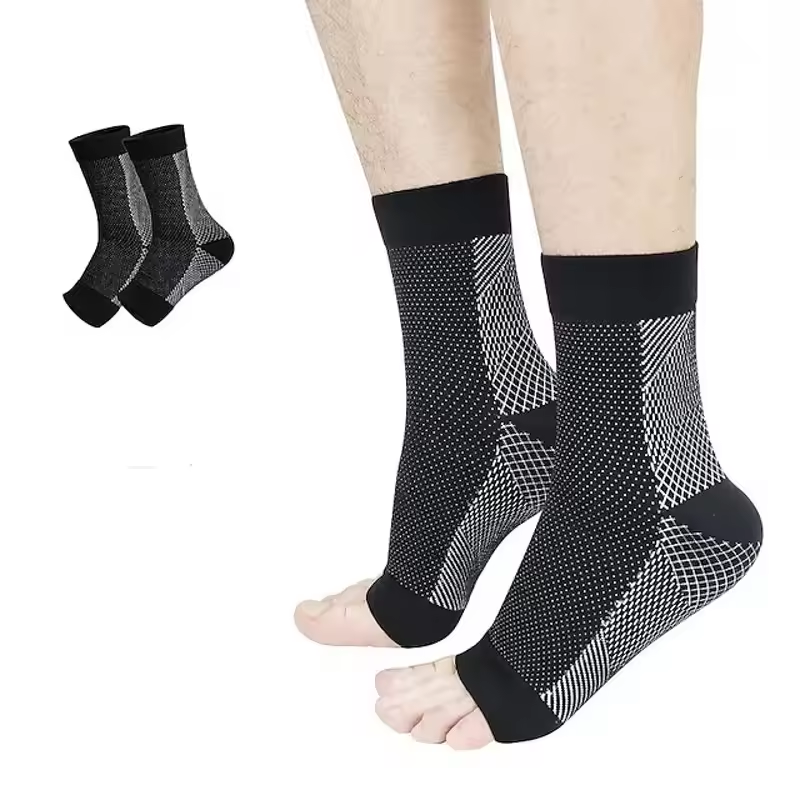
Different Types of Compression Socks and Duration
Not all compression socks are the same, and the type influences how long you can wear them. Here are the common types and their typical duration of use:
- Graduated Compression Socks: They have the highest pressure at the ankles, decreasing up the leg. Recommended primarily for medical purposes, these should be worn as prescribed, often throughout the day.
- Anti-Embolism Socks: These are used for those with limited mobility, like bedridden patients. The duration of use is usually dictated by a healthcare professional based on the patient’s condition.
- Non-Medical Support Hosiery: Offering mild compression, these can be worn by anyone who feels leg fatigue. They are safe for all-day use but may not be suitable for those with severe circulatory problems.
When considering ‘how long can I wear compression socks,’ remember that matching the right type to your needs is crucial. It’s also vital to stick to any specific duration recommended for the type you choose. Consult with a healthcare provider if you’re unsure about the best option for you. Keep in mind that proper use is your key to maximizing the benefits while preventing any potential risks associated with prolonged wear.
Tips for Getting Accustomed to Compression Socks
Getting used to wearing compression socks can be a challenge at first. But with a few practical tips, you can ease into their use and enjoy the full benefits they offer. Here’s how to get accustomed to compression socks effortlessly:
- Start Gradually: Wear your socks for a few hours each day. As you feel more comfortable, extend the time you have them on.
- Choose the Right Size: Make sure your compression socks fit correctly. A proper fit reduces the chance of discomfort.
- Wear Them in the Morning: Legs are less swollen in the morning. It’s the best time to put on your compression socks.
- Keep Them Clean: Wash your socks regularly to maintain hygiene and the elasticity of the fabric.
- Stay Hydrated: Drinking water helps with overall circulation and makes it easier for your body to adapt to the compression.
- Move Around: Regular movement encourages blood flow, complementing the effects of the socks.
- Be Patient: Allow your body time to adjust to the sensation of compression. It might feel odd at first, but soon you won’t notice it.
These suggestions can help you adjust to wearing compression socks smoothly. Remember, how long can I wear compression socks depends on my individual needs, so it’s important to follow these tips while listening to your body’s cues and consulting with your healthcare provider for personalized advice.
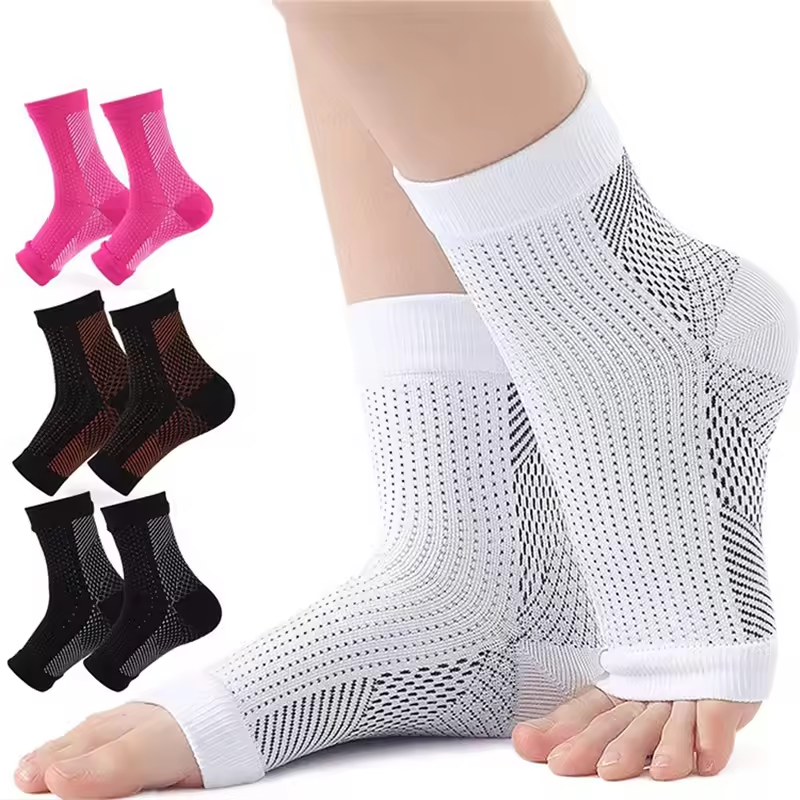
When to Consult a Professional About Compression Sock Use
Wearing compression socks should be straightforward, but sometimes you may need expert advice. Here’s when to seek a professional’s guidance:
- If You’re New to Compression Socks: Professionals can suggest the right type and fit for you.
- When Facing Specific Health Conditions: Conditions such as diabetes and circulation issues may require special sock types.
- If You Experience Negative Symptoms: Pain, numbness, or skin changes warrant a consultation.
- Before Post-Surgery Recovery: Get advice on the correct compression level and duration for healing.
- For Athletic Performance: Athletes may need custom guidance for optimal benefits during training or post-exercise recovery.
- When Pregnant: Pregnant women should consult for the ideal compression and safe use duration.
It’s best to consult a healthcare provider if you have any doubts. They will provide guidance tailored to your circumstances. Remember, the question ‘how long can I wear compression socks‘ is best answered by someone who understands your specific health needs. Keeping in touch with your care provider ensures you maximize benefits while minimizing any possible risks from compression socks.







